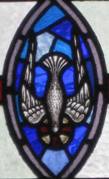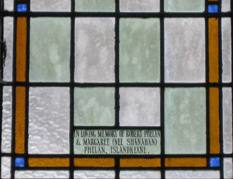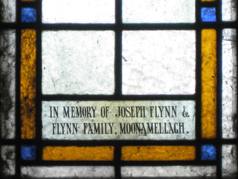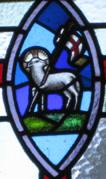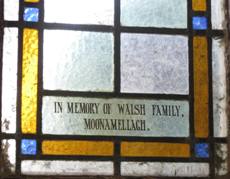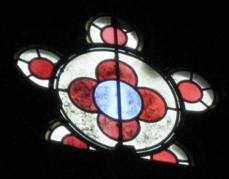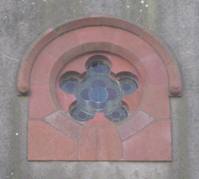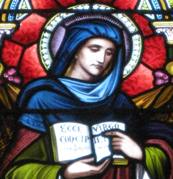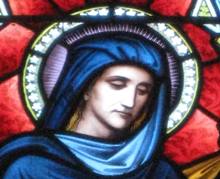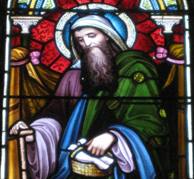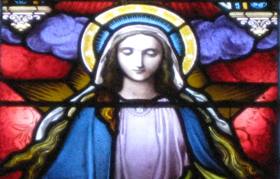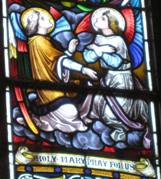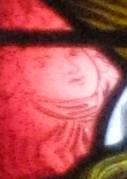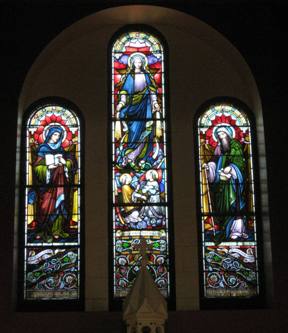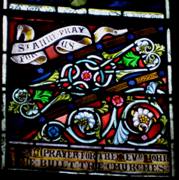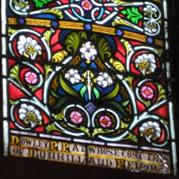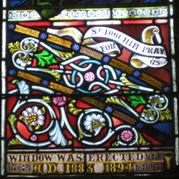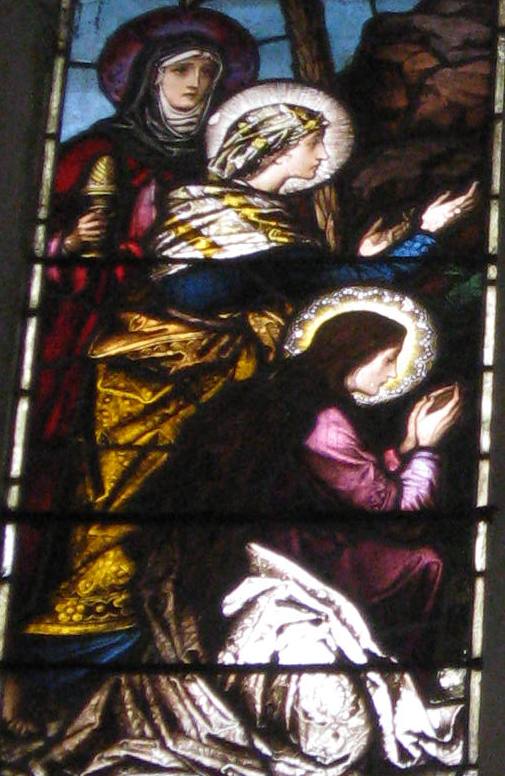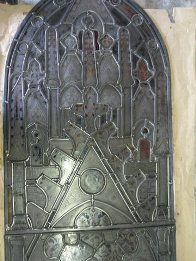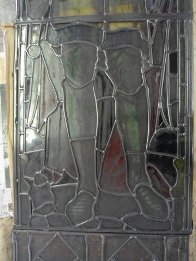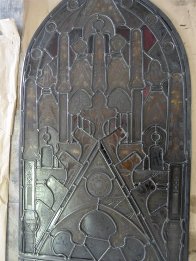The third north transept window
The main detail in this window is the stylised dove viewed from below.
The dove is not the dove of peace which usually carries an olive branch in its beak but, because of its halo, is taken to symbolise the Holy Spirit –
“In those days Jesus came from Nazareth of Galilee and was baptized by John in the Jordan. And when he came up out of the water, immediately he saw the heavens opening and the Spirit descending on him like a dove. And a voice came from heaven, ‘You are my beloved Son; with you I am well pleased.'” [Mark 1:9-11].
The third and fourth windows of the north transept are situated in the gable wall and are wider and of a different style to the others in the transept or to those in the nave. The same is true of the two gable windows in the south transept.

